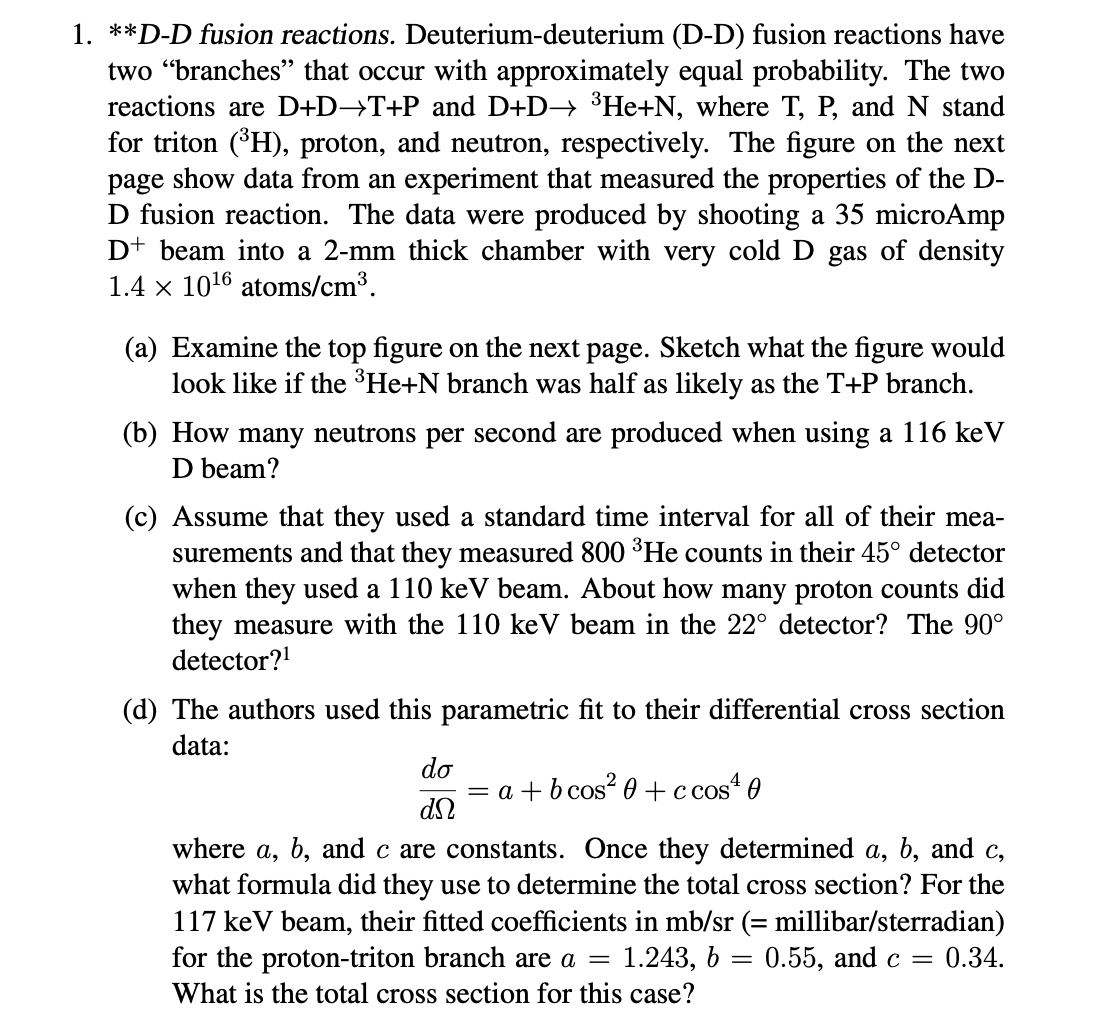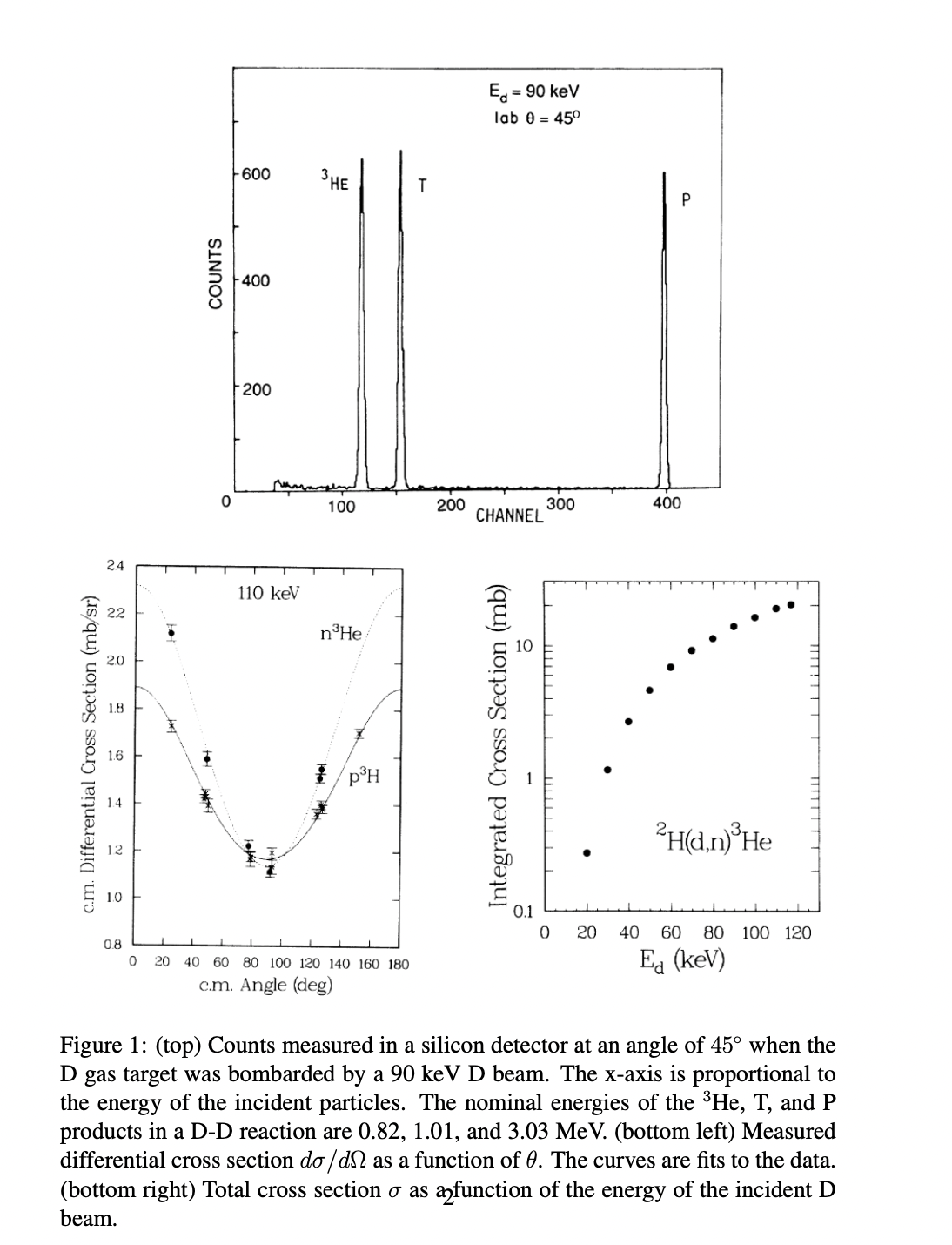Answered step by step
Verified Expert Solution
Question
1 Approved Answer
1. **D-D fusion reactions. Deuterium-deuterium (D-D) fusion reactions have two branches that occur with approximately equal probability. The two reactions are D+DT+P and D+D


1. **D-D fusion reactions. Deuterium-deuterium (D-D) fusion reactions have two "branches" that occur with approximately equal probability. The two reactions are D+DT+P and D+D He+N, where T, P, and N stand for triton (3H), proton, and neutron, respectively. The figure on the next page show data from an experiment that measured the properties of the D- D fusion reaction. The data were produced by shooting a 35 microAmp D+ beam into a 2-mm thick chamber with very cold D gas of density 1.4 1016 atoms/cm. (a) Examine the top figure on the next page. Sketch what the figure would look like if the He+N branch was half as likely as the T+P branch. (b) How many neutrons per second are produced when using a 116 keV D beam? (c) Assume that they used a standard time interval for all of their mea- surements and that they measured 800 3 He counts in their 45 detector when they used a 110 keV beam. About how many proton counts did they measure with the 110 keV beam in the 22 detector? The 90 detector? (d) The authors used this parametric fit to their differential cross section data: do = a + b cos + c cos 0 where a, b, and c are constants. Once they determined a, b, and c, what formula did they use to determine the total cross section? For the 117 keV beam, their fitted coefficients in mb/sr (= millibar/sterradian) for the proton-triton branch are a = 1.243, b = 0.55, and c = 0.34. What is the total cross section for this case? c.m. Differential Cross Section (mb/sr) COUNTS -600 400 200 3HE T E = 90 keV lab 0 = 45 0 100 200 300 400 CHANNEL 2.4 110 keV nHe 20 18 1.6 pH 1.4 23 10 Integrated Cross Section (mb) 1 P 2H(d,n)He 0.8 0 20 40 60 80 100 120 140 160 180 c.m. Angle (deg) 0.1 0 20 40 60 80 100 120 Ed (keV) Figure 1: (top) Counts measured in a silicon detector at an angle of 45 when the D gas target was bombarded by a 90 keV D beam. The x-axis is proportional to the energy of the incident particles. The nominal energies of the He, T, and P products in a D-D reaction are 0.82, 1.01, and 3.03 MeV. (bottom left) Measured differential cross section do/d as a function of 0. The curves are fits to the data. (bottom right) Total cross section as a function of the energy of the incident D beam.
Step by Step Solution
There are 3 Steps involved in it
Step: 1

Get Instant Access to Expert-Tailored Solutions
See step-by-step solutions with expert insights and AI powered tools for academic success
Step: 2

Step: 3

Ace Your Homework with AI
Get the answers you need in no time with our AI-driven, step-by-step assistance
Get Started


